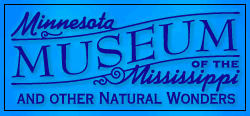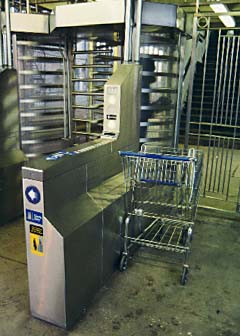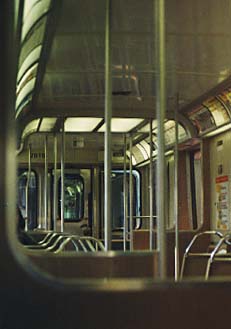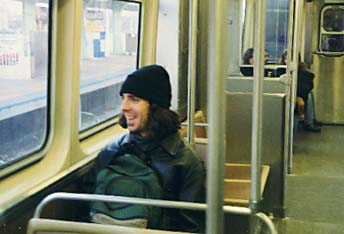

Field Trips |

El Day - Friday, February 26, 1999 The Experiment: Nathan and Matt attempt to ride every mile of CTA track open to the public in one day, on one fare. The Setup: Passing through the turnstiles of a CTA platform allows you to make unlimited transfers between trains until you exit the train system. If you transfer to a bus, or return to the train within two hours, the second trip costs only 30¢.
The Ride: CTA literature states that there are over 250 miles of track throughout its system. It is unclear if that figure includes all public lines as well as track found within the train yards, the connection tracks used for maintenance, and double-tracked stretches like the parallel Purple and Red Lines. In any case, we intended to ride every inch of public track in one day. Our journey began just before 7am and, aside from a two-hour break to visit a friend's art gallery opening, did not end until after 10pm that night. It took us 13 hours to ride every train and every branch of the 'L' system. The Complications: Our provisions for the journey consisted of train maps, camera, notebook, a packed lunch, and a thermos of coffee. This last item created some further complications of its own. There are no public rest rooms in the CTA system. One loophole in the system, which has since then been closed, made the entire adventure physically possible. At that time, free transfers were allowed between the underground Red Line and elevated Orange/Brown/Green Lines by taking a paper transfer from a machine when leaving the station. This transfer allowed 15 minutes to pass between stations (they are only a few hundred feet apart). In those 15 minutes we were able to sprint around the corner to the Loop Patio food court (Wabash & Lake), to use the rest rooms, refill our canteens, and even purchase afternoon snacks. It is no longer necessary or even possible to use paper transfers when transferring between the Red & Orange Line stations. Instead, the turnstile which reads your CTA pass understands which train you are coming from, and allows you free entrance. Presumably, you would only be able to make the transfer once during your ride, and only if you make the transfer within 2 hours of having originally entered the CTA system. Without access to public rest rooms, attempting to ride every mile of CTA track would be at best an uncomfortable experience, at worst downright dangerous!
The Geography: Chicago's neighborhoods sprawl across a flat and poorly drained plain in all directions. Its transportation system was originally built on elevated piers to speed over the clogged traffic of the streets to reach these outlying neighborhoods. Like the city, the L system is organized in a strict hierarchy: all trains are either headed toward or away from the Loop, the circle of elevated track which girdles the traditional social and business heart of downtown. Later additions to the L system added subway lines running in tunnels below the Chicago River, but the peak destinations for these lines remain the stations within the circle of the elevated Loop. While the nominal destination of train cars on the Red and Blue lines may be somewhere far to the north or south, most passengers are still riding toward or away from downtown. Because the majority of the L system is above ground, you'll get a great view of Chicago in whichever direction you travel on the train. Each line radiating from the Loop provides its own unique view of the various quadrants of the city. The most interesting areas to visit are seen from the older sections of track which run directly through the neighborhoods, sometimes only inches away from the brick tenements crowded in on the left and right.
The Notebook: A few selections of field notes from the expedition. |



